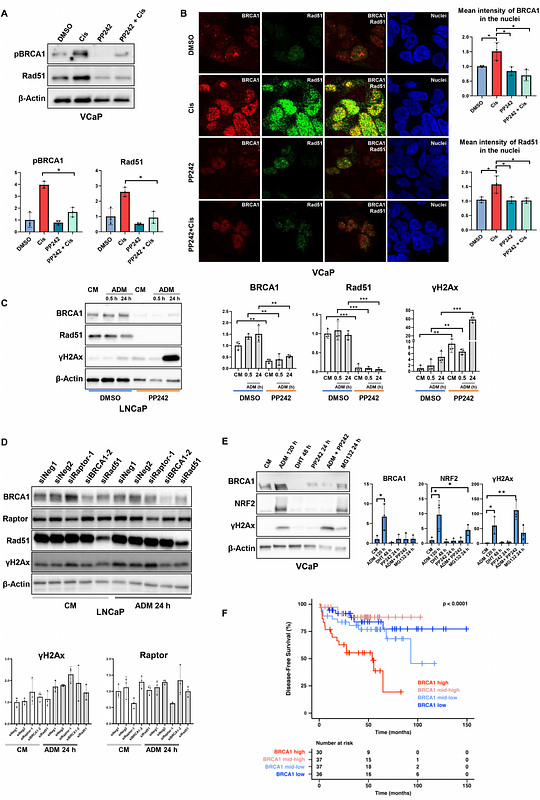Functionality of BRCA1 supports the survival of prostate cancer cells during the development of castration resistance

Functionality of BRCA1 supports the survival of prostate cancer cells during the development of castration resistance
Sriraman, S.; Virtanen, V.; Kukkula, A.; Toriseva, M.; Rokka, A.; Lumiainen, A.; Ahlskog, J. K.; West, G.; Poutanen, M.; Taimen, P.; Sundvall, M.
AbstractAndrogen deprivation therapy (ADT; castration) is the main treatment option for metastatic prostate cancer (PCa), but eventually, castration-resistant prostate cancer (CRPC) develops with no curative treatments. In CRPC, more than 20% of men carry mutations in DNA damage response (DDR) genes, including BRCA1/2. In this study, we elucidated the prostate tissue-specific functional role of BRCA1 protein. Our results indicate that DDR is dynamically regulated by androgen receptor (AR) signaling, and AR activation by the natural ligand dihydrotestosterone strongly downregulates the expression of BRCA1 in multiple cell lines. Consistent with these findings, our analyses of patient samples and mouse xenografts showed that DNA damage and BRCA1 expression were sustained after ADT. With unbiased mass spectrometry and bioinformatics approaches as well as experimentally, we found that BRCA1 interacts with Raptor, an mTORC1 component, and regulates the mTOR signaling pathway and PCa growth in vitro. Furthermore, we found that mTOR inhibition reduced the recruitment of DDR proteins, BRCA1 and Rad51, to DNA damage sites, creating a vulnerability towards DNA damage-inducing androgen deprivation. Moreover, we observed that BRCA1 supported ADT-induced activation of the oxidative stress sensor NRF2. Our findings shed further light on the complex DDR-AR interplay in PCa and suggest that, during PCa progression, BRCA1 expression may be retained due to the beneficial modulation of mTORC1 signaling in the AR environment by BRCA1.


